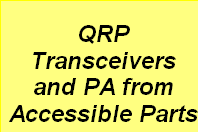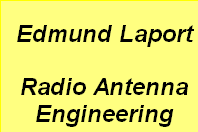

Antentop is FREE e-magazine devoted to Antennas and Amateur Radio an
Special page devoted to
Atmospheric Current: Practical Experiments

Custom Search
|
ANTENTOP-
01- 2008, # 010 |
Atmospheric Current: Practical Experiments |
|
|
|
||
|
|
||
|
|
||
|
|
V. T. Polaykov, RA3AAE, Ph. D
in technical science |
|
|
The Article describes some experimenters that prove the mysterious current
from the Broom Antenna |
Credit Line: http://qrp.ru/ |
|
|
|
|
|
|
The article is described my experiments to measure
"atmosphere current" (see Reference 1).At
first I tried to measure the current at field conditions. For
antenna mast I have used a telescopic plastic fishing tackle in
7 meters long. Broom was made from opened multistrand cable. Branches
of the broom had length in 10 centimeters. Grounding was made
from a steel rod in diameter of 4 millimeter and length in 50
centimeters. The experiment was made in a forest at a wide glade.
It was good calm weather. A thin wire is going from the broom
to the digital multimeter M830B, another wire from the multimeter
is going to the ground. Multimeter was installed at scale "200
mV". At the scale the multimeter has input impedance 1 million
Ohms, so, the maximum measurement current is 200 nano A. However,
the multimeter has digits at scale that show 0.1-nano A. |
V. T. Polaykov, RA3AAE |
|
|
It was discovered no any current. A weak sensitivity
of the multimeter may be the reason. However, another phenomenon
was discovered. At swing of the fishing rod (with broom) that
is usual matter at the experimenters, the multimeter shows current.
The current reached up to 10 nano A and changed by amplitude and
polarity. I tried to count the current. The speed of a flow of
ions is equal to mobility of ions multiplied by intensity of E-
field. The mobility of negative ions (on Chizhevsky ) under normal atmospheric
conditions is equal 1,83 centimeter /second, and intensity of
an atmospheric static field - about 1,3 V / centimeter. So, speed
of flow of ions V near 2,5 centimeter/second. Density of flow of ions j = nVe.
Concentration n
of ions at natural conditions is estimate equal
near 1000 on cubic centimeter, charge of an ion å = 1,6.10-19
ql. So, ionic current near ground is near about
4 pico A/square meter, that is not practically matched with some
data found by me in technical reference- near 2,5... 3,5 pico
A/ square meter. |
It is less of the sensitivity of the multimeter in
10-100 times. At the same time we may assume, that grounded (through
the digital multimeter) antenna creates around of it's
end top a volumetric charge with a zero potential relative to
the ground. Moving fast (faster than ions can move) the broom antenna
end from one air area (that almost has potential of the broom)
to other air are (that has potential U
near 1000 V relative to the ground- 130 V (electrical gradient)
multiply to 7.5 meters (height of the fishing rod)) is caused
recharge current i
for the antenna. Let's find the current. I= dq/dt, Where: q= CU. Assume that antenna has C= 20
pF and time of antenna moving- 1 second. So, antenna current
would be 20 nano-A, that the multimeter
is shown to us. Conclusion 1:
Although I cannot measure the antenna current at the field
conditions the experiment prove the electrization of the air around
the antenna broom. |
|
|
|
||
|
|
Page 22 |
|
 |
 |
 |
 |
Just for Fun:

Powered byIP2Location.com
Thanks for your time!
Last Updated:
February 2, 2020 22:19






